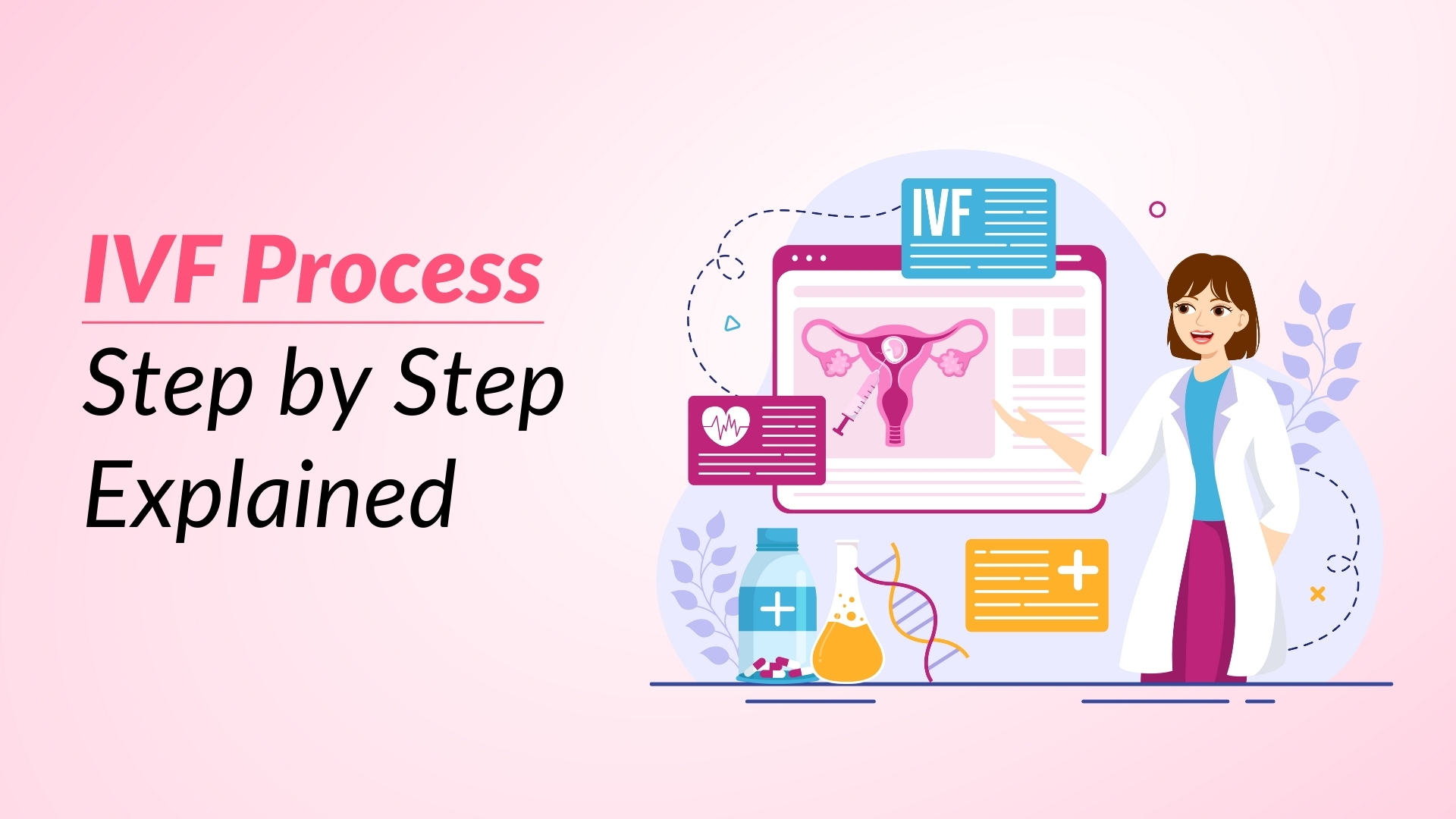Couples facing trouble getting pregnant shouldn’t wait to see a doctor. Discussing the problem to fertility experts at FERTY9 can make it easier and improve success rates to conceive. In the process of IVF, the egg gets fertilized with sperm and then transferred to the uterus for pregnancy development, generally taking three weeks for one cycle. Here’s a detailed procedure of IVF discussed stepwise:
1. Consultation and Evaluation
In this step, the doctor will review the medical condition, examine the partners and conduct the required tests. The customized process and cost of treatment is also explained.
Medical History Review:
· Reviewing partners’ medical history.
· Examining previous treatments, conditions, lifestyle factors.
Physical Examination:
· General physical exam.
· Pelvic exam for female partner.
2. Preparation of couple for procedure
In this step, the couple are asked for pre-IVF tests to identify the exact condition of the couple and to know the main cause of infertility. These tests include:
Fertility Test for Partners:
- Women’s tests: Blood tests for hormone levels (FSH, LH, Estradiol, AMH) and ultrasound for ovaries and uterus condition and examine inside the uterus.
- Men’s tests: Semen analysis for sperm count, motility, and morphology.
- Screening for infections: Both partners are examined for presence of any infections.
3. Treatment and Monitoring
In this step the treatment will be started by necessary scans, ovary stimulation and regular monitoring. The protocol depends on the individual’s condition and response.
- Ovary stimulation: The doctor prescribes oral medicines or injections for fertility over 2 weeks. It stimulates ovaries to produce a greater number of matured eggs than in a regular menstrual cycle which are needed for increased chances of fertilization and multiple embryo transfer/freezing.
- Monitoring: This is the phase that usually requires more doctor visits for checkup and the woman will undergo regular monitoring, that includes:
- Ultrasound: To track the growth and development of the follicles in the ovary.
- Blood Tests: To monitor hormone levels to assess the ovaries and their response to stimulation.
- Trigger Shot and scheduling Egg retrieval
This step involves egg maturation, its retrieval and fertilization that are explained below:
Once the follicles reach an optimal size, a “trigger shot” is given for egg maturation and prepares them for retrieval.
- Timing is Crucial: Egg retrieval is scheduled approximately 34-36 hours after the trigger shot.
4. Egg Retrieval:
Procedure: In this step, a minor surgical procedure is conducted to retrieve the eggs from the ovaries. This is usually done under sedation to ensure the woman’s comfort.
Duration: The procedure typically takes about 15-30 minutes.
Post-Procedure: Some women may experience mild cramping or a small amount of vaginal bleeding afterward. Rest is usually recommended for the day.
5. Sperm Collection and Preparation:
The male partner provides a fresh semen sample on the day of egg retrieval, which undergoes washing to separate healthy, motile sperm from seminal fluid, aiming to select the best quality for fertilization.
6. Fertilization: Embryos are formed in this step using various steps for successful pregnancy.
The retrieved eggs and the prepared sperm are combined in the laboratory. In this stage, the sperm fertilize the eggs.
- ICSI (Intracytoplasmic Sperm Injection): This technique is used to improve the chances from male partner fertility, where a single healthy sperm is directly injected into each mature egg.
- Monitoring Embryo Development:The fertilized eggs are monitored in the laboratory for several days (typically 3-6 days). Experts assess their development, to select the best quality embryos for transfer.
7. Embryo Transfer:
· Procedure: The selected embryo(s) are transferred into the woman’s uterus usually after three days after fertilization. However, some couples wait till five days to enter the next stage of embryo (Blastocyst stage). This procedure is usually done through a thin tube of catheter and this process is quick and painless, and usually does not require any sedation.
· Timing: Embryo transfer usually takes place 2-6 days after egg retrieval, depending on the stage of embryo development.
· Post-embryo transfer: Hormonal supplements are prescribed by a doctor for preparing and maintaining the uterine lining for embryo implantation and supporting early pregnancy.
8. Pregnancy Test:
- Waiting Period: A waiting period of about two weeks after the embryo transfer is necessary before a pregnancy test for accurate results that determine if the IVF cycle was successful.
- Blood Test: A blood test to measure the level of hCG is the most accurate way to confirm pregnancy. Some clinics may also advise a home urine pregnancy test.
- Follow-up: If the pregnancy test is positive, further blood tests and early ultrasounds will be scheduled to confirm a viable pregnancy.
Frozen Embryo Transfer (FET): High-quality embryos can be cryopreserved for later use during IVF round. This procedure involves freezing the embryos, moving them into the uterus, and treating the lining of the uterus. For follow-up attempts, FET is a simpler and frequently inexpensive choice.
The IVF process is emotionally, physically, and financially demanding. Success rates vary depending on several factors, primarily the woman’s age, the cause of infertility, the quality of the eggs and sperm/embryos, and the expertise of the fertility clinic. Open communication with the medical team and emotional support are crucial throughout the IVF journey.




